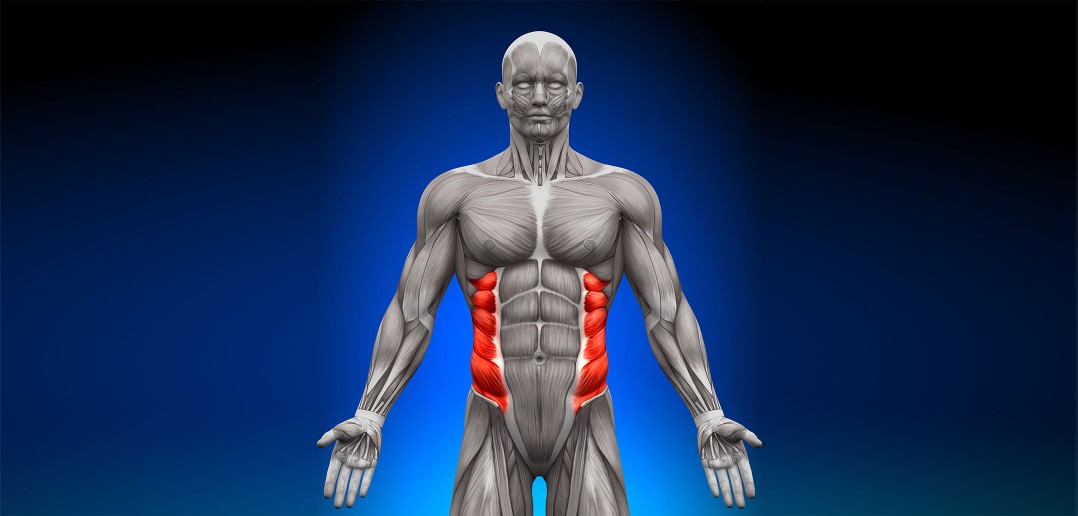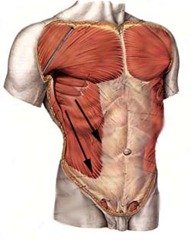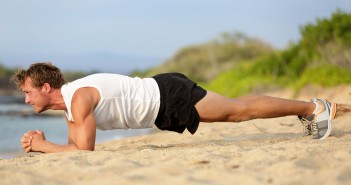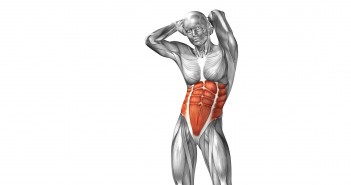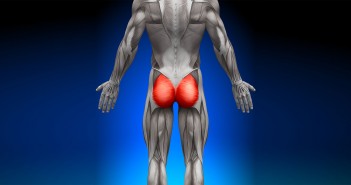Your oblique muscles (side abdominals) help you to bend from the side or twist your torso. Strong obliques support the lower back, warding off back pain and posture problems.
Your abdominals consist of four muscles. Most people are used to hearing them simply called abs. The abs include the Rectus abdominis, the Transversus abdominis, and a pair of muscles called the obliques.
The oblique muscles actually include the following pair of muscles on each of your sides:
- The external obliques form the top muscle.
- The internal obliques lie underneath the external obliques.
Together, they cross diagonally near the side of your midsection, from the bottom of your rib cage to your pubic area. The obliques are responsible for side bending and waist twisting moves.
The Role of the Obliques in the Golf Swing
When you swing efficiently, you should load your obliques as you coil towards the top of your backswing (upswing), elongating (stretching) them to achieve the correct position at the top.
In the downswing, your obliques, together with the psoas major, are highly activated, creating a crunch-like position as you extend your hips and tilt your pelvis, while keeping your chest over the golf ball.
Your obliques play a key role in transmission of power up the kinetic chain from the hips to the upper body. They help to separate your pelvis from your shoulders during the transition and into the downswing, moving it towards the target and generating more coil through your core. This creates more potential power in the downswing and thus increased club head speed at impact.
If you don’t separate your pelvis from your shoulders, you will rotate your whole body at the same time during your golf swing, causing an over-the-top, out-to-in swing path with your arms and golf club. You will also generate less club head speed through the ball, leading to less distance with every club. This is also one of the main causes of a slice.
Your obliques are key to creating and then quickly closing this separation of the pelvis and shoulders, or core disassociation, the so-called X-factor. It is the closing of this separation as you approach impact that transfers the power generated by the lower body, and the additional potential energy of the stretched core muscles, into active, functional kinetic energy, or club head speed.
Through impact and in the follow-through, your obliques work with the rest of your core — specifically the quadratus lumborum, psoas major, and the transversus and rectus abdominis — to decelerate your body safely. Deceleration of your body is vital in the golf swing, as it allows for stabilisation and the transfer of energy up the kinetic chain all the way to the club head.
If you have any questions or comments about this or other articles on Golf Loopy, please send us an email.
You May Also Like…
Overview of a Great Golf Swing, which summarises the correct movements in a great golf swing.
Golf Anatomy and Kinesiology, a collection of articles describing the roles of the muscles involved in the golf swing.
Abdominal muscles, which gives more information on the obliques.
Core muscles, which describes the muscles, including the obliques, that run the length of your trunk and torso.
Kinetic Chain, which describes how the different parts of your body act to transfer energy from the ground to the golf ball.

